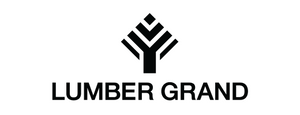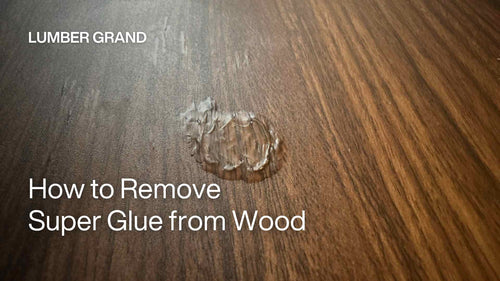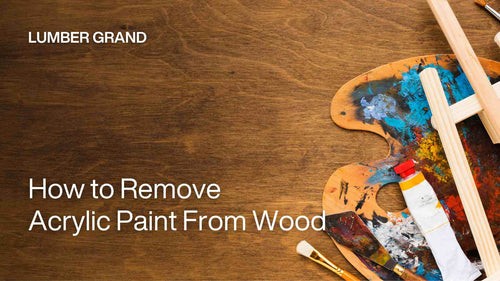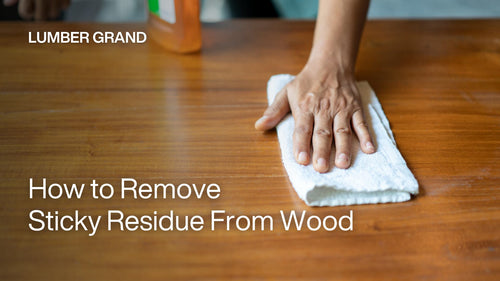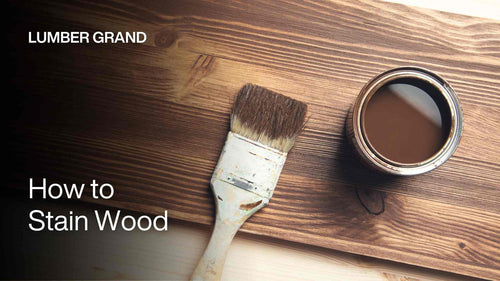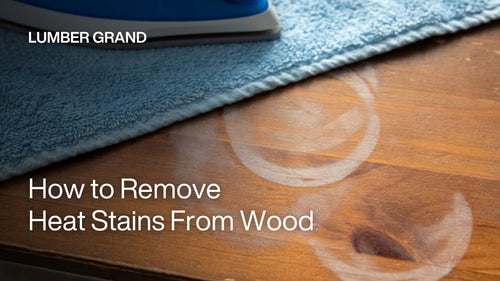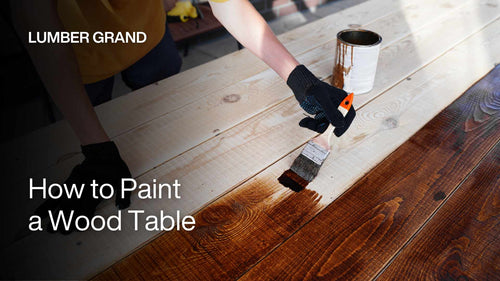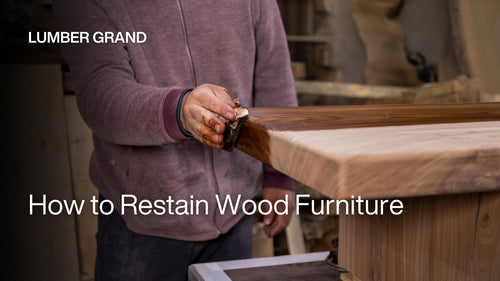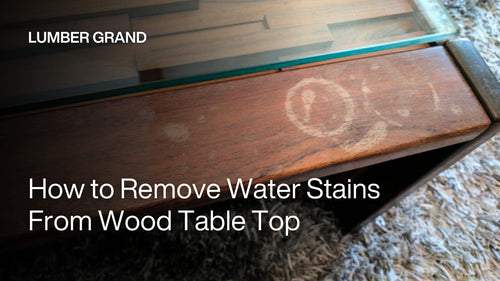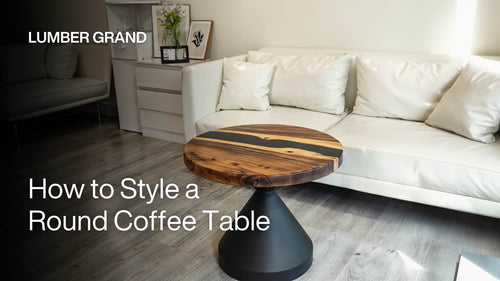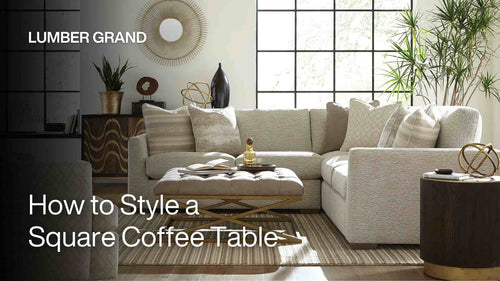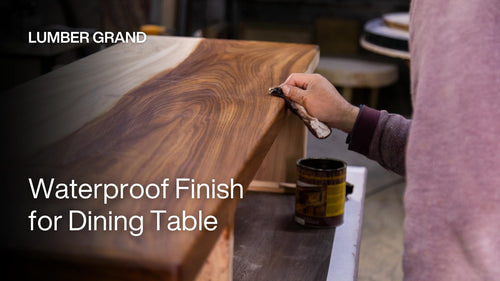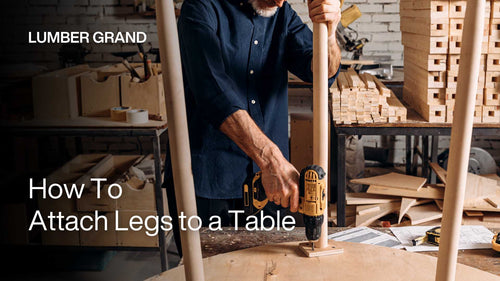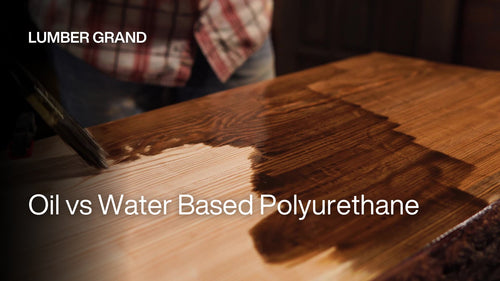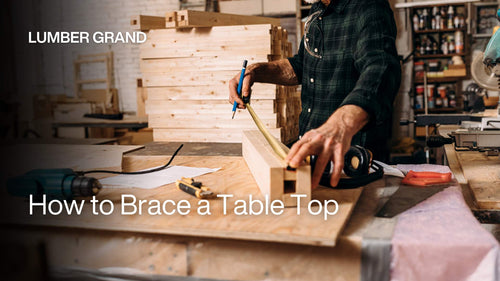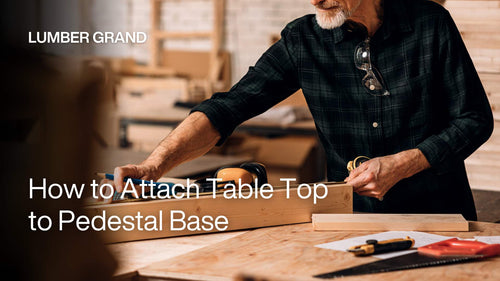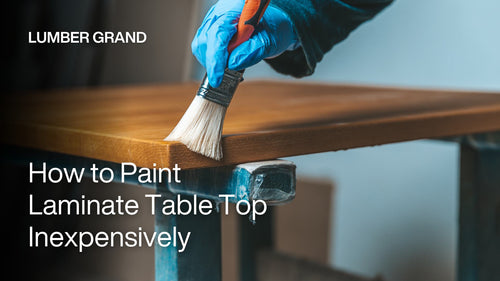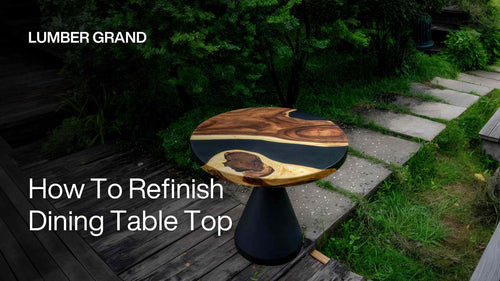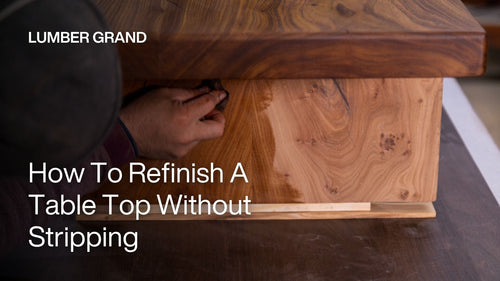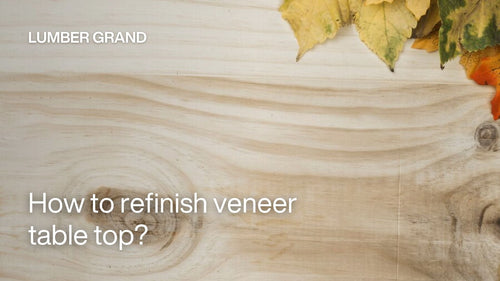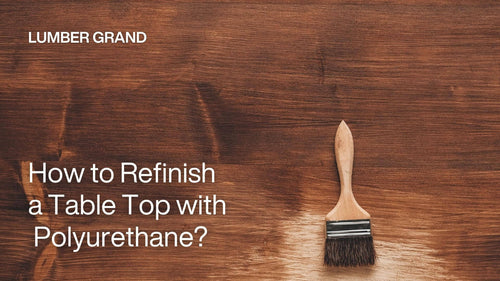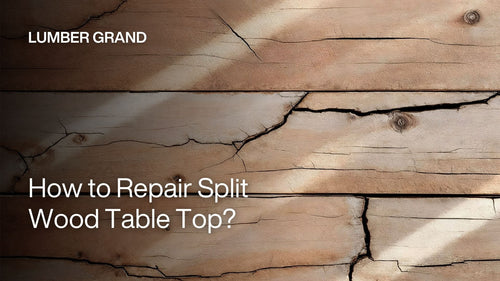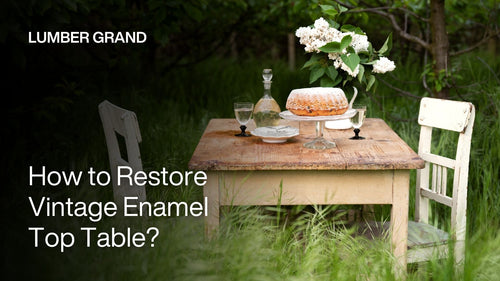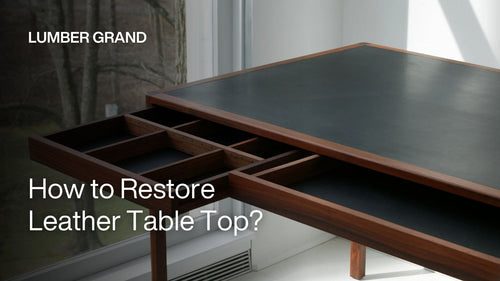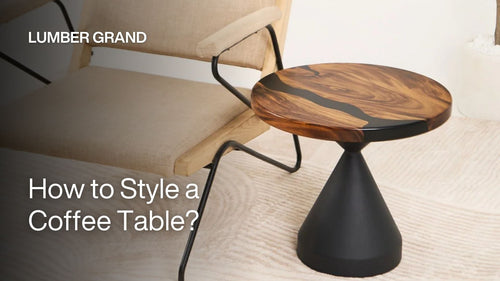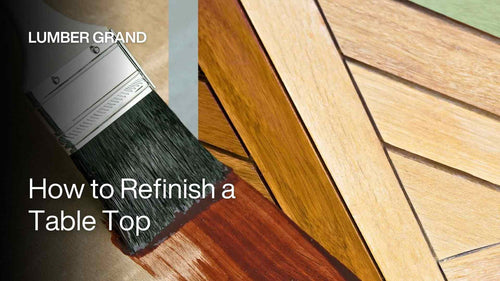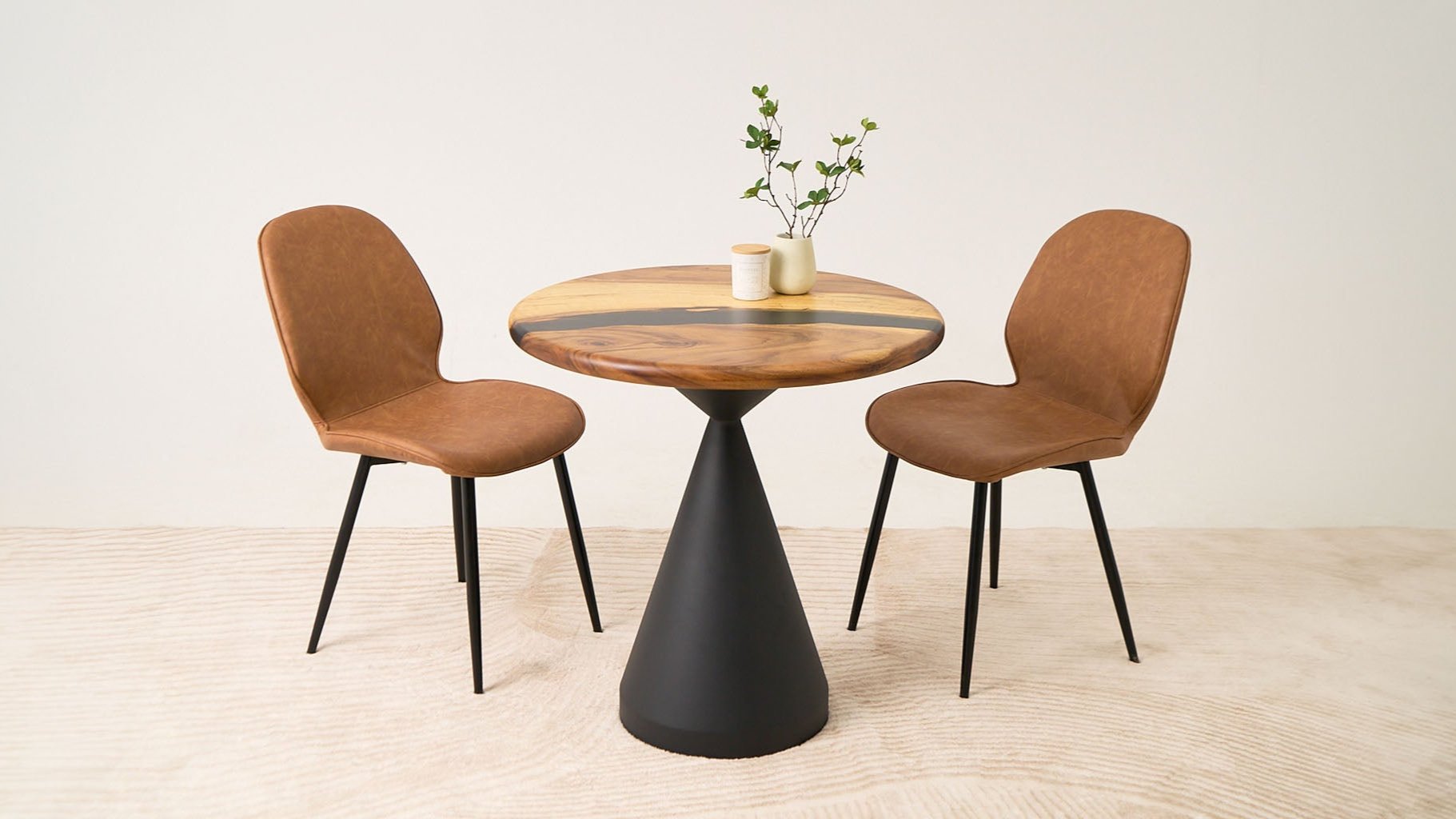Bottle cap epoxy table combines colorful bottle caps and clear epoxy. You can make a table with your own style. In this article, Lumber Grand will guide you step by step to make a bottle cap epoxy table, from preparing materials and arranging the design to pouring epoxy and finishing the product.
What Is a Bottle Cap Epoxy Table?
The epoxy bottle cap table is a product made from a combination of bottle caps and epoxy resin, which creates a table surface with patterns from the caps of a bottles arranged as desired. The bottle cap epoxy table is preferred for several reasons:
-
High aesthetics with a bright, transparent surface and 3D effect from the bottle cap.
-
Contribution to the trend of creative recycling, turning discarded materials into artworks.
-
Thanks to the strong epoxy layer that protects the cap of a better durability bottle.
-
High personalization with the ability to customize according to personal preferences.

A bottle cap epoxy table embeds caps in clear epoxy for a unique, durable design
Step-by-Step Guide: How to Make a Bottle Cap Epoxy Table
The following guide will help you create a unique bottle cap epoxy table from A to Z with technical details and helpful tips for each step in the DIY process.
1. Step 1: Prepare Materials & Tools
To start the epoxy table design of the bottle lid, you need to prepare all quality materials and tools to ensure the best results. Knowing how to make an epoxy table requires these essential tools to ensure that the process is smooth and accurate.
-
Bottle Caps: Depending on the size of your table, you will need a different number of bottle caps. You can collect bottle caps from everyday drinks. Or you can contact water and beer shops. Or buy them from craft websites. You should choose caps that are not dented, have beautiful patterns, and combine many brands to create a colorful effect.
-
Table top: There are popular types of wood today such as MDF, marine plywood, and natural wood, or you can recycle from an old table.
-
Bottle cap glue: The bottle caps will be coated with epoxy for the bottle cap table later. So they only need regular superglue. When gluing, you should be careful because if too much glue is exposed, the table surface will be damaged.
-
Epoxy resin: Epoxy for wood countertops such as clear, UV-resistant.
-
Tools needed: Measuring cup and epoxy mixing stick, nitrile gloves, waterproof tape and box cutter, mini blowtorch or dryer machine to remove air bubbles. Sander or sandpaper of different grits. Measuring tape and marking pen.

To begin, gather high-quality materials and tools for the best results
Photo: ©Aflo Images on Canva.com
2. Step 2: Choose & Prepare the Table Surface
First, use a warm towel to wipe off the dirt, then sand to create adhesion, wipe again with isopropyl alcohol to remove grease and sanding dust. If you’re working on a glow epoxy resin table with bottle caps, ensure the surface is clean and smooth before proceeding.
If it is new wood, you can treat it by applying a primer to reduce moisture absorption from the wood. Apply adhesive around the edge of the table top if you do not create a separate frame.
If you reuse an old table, remove the screws and hinges. Sand again to remove the old paint. Repair cracks with wood putty or epoxy. Finally, apply a primer to recreate a new surface.

Select and prep the table surface
Photo: ©Syda Productions on Canva.com
3. Step 3: Arrange & Secure the Bottle Caps
Sketch the pattern on paper or with design software for the bottle cap epoxy table, you can refer to the following ideas:
-
Arrange by color to create gradients or randomly for a natural feel or brand to create logos or images.
-
Create geometric patterns like circles, squares.
We proceed to the step of fixing the bottle cap: Mark the positions of the bottle cap according to the design pattern. Next, you apply a small amount of glue to the underside of the bottle cap.
Then gently press the bottle cap into place and hold for about 10-15 seconds. Wait for the glue to dry completely according to the manufacturer's instructions (usually 24 hours).

Position and fix the bottle caps securely
Photo: ©Maksim Safaniuk on Canva.com
4. Step 4: Build a Frame to Contain the Epoxy
Epoxy frame to help prevent liquid from leaking out and determine the thickness of the epoxy coating. For an epoxy bottle cap table, cut the wooden bar with a minimum height of 5mm higher than the surface of the bottle cap, taking care to measure the exact size of the table top edge. Then fix the wooden bars with glue and gum. Or you can choose to make the frame with silicone. If you want to DIY epoxy coffee table, the process is the same.

Construct a frame to hold the epoxy in place
5. Step 5: Mix & Pour the Epoxy Resin
Epoxy mixture rate according to the manufacturer (usually 1:1 or 2:1). Mix slowly for 3-5 minutes in a certain direction, avoid moving vigorously to cause air bubbles.
The ideal temperature to spill an epoxy resin table coating is above 75°F and moisture below 80%. Note that you should wear protective equipment such as gloves, glasses and masks to ensure health safety.
How to pour epoxy coating as follows:
-
Primer: Pour a thin layer of epoxy 2-3mm to fill the gap between the bottle cap. Use a mixing stick to push the epoxy into the small gaps, then use a blowtorch or hair dryer at low temperatures to remove air bubbles. Wait 2-4 hours for the first layer to dry.
-
Coating: Check that the primer has dried but is still sticky. Mix new epoxy, pouring from the center outwards in a spiral motion. Use a blowtorch to remove air bubbles immediately after pouring and repeat after 10-15 minutes.
-
Handling after pouring: Cover the surface lightly to avoid dust. Keep the temperature stable and check periodically in the first few hours to remove any new air bubbles.

Mix epoxy at a 1:1 or 2:1 ratio, stirring slowly for 3-5 minutes to avoid air bubbles
Photo: ©Thirdman on Canva.com
6. Step 6: Epoxy Cure & Final Touches
The time for the epoxy layer to dry is from 24-48 hours, at this time you can touch it lightly. However, if you let it dry completely, it will take from 4-7 days.
After drying, remove the epoxy frame and cut off the excess epoxy with a knife or CNC machine. Sand the edges with sandpaper from coarse to fine (P120 → P220 → P320 → P400).
Finally, polish the surface: use fine sandpaper (P800-P2000) with water to create a smooth surface. Or use a polishing machine with a specialized epoxy polishing cream. Polish in circles with moderate pressure.
Wipe clean with a cloth after each polishing step. Apply a layer of specialized epoxy protective wax and attach the table legs if not already present.

The epoxy dries in 24-48 hours for light touch, but fully cures in 4-7 days
How to Maintain & Care for Your Bottle Cap Epoxy Table?
Proper maintenance will keep your bottle cap epoxy table beautiful and durable for many years.
-
Daily cleaning: Use a soft damp cloth to wipe dust, avoid using hard rags. Dry immediately after cleaning.
-
Periodic cleaning: Use warm water mixed with neutral soap, do not use strong chemicals and abrasive tools.
-
Scratch treatment: If the scratch is light, polish the epoxy; if the scratch is deep, use P1500-P2000 sandpaper and then polish. In case of large scratches, epoxy re-coating may be required.
-
Protection from heat sunlight: Use coasters for hot drinks, avoid direct sunlight and place away from heat sources.
Bottle Cap Epoxy Table Cost: What You Need to Know
Understanding the cost will help you plan your finances properly when making an epoxy bottle cap table.
DIY Costs:
|
Materials/Tools |
Average cost (USD) |
|
Wooden table top |
$30 - $600 |
|
Epoxy resin (1-1.5 gallons) |
$70 - $150 |
|
Bottle cap (if purchased) |
$15 - $50 |
|
Basic tools |
$50 - $100 |
|
Secondary materials |
$20 - $50 |
|
Total cost |
$185 - $500 |
Cost of buying ready-made tables:
|
Table type |
Average cost (USD) |
|
$200 - $600 |
|
|
Medium dining table |
$300 - $1,500 |
|
Large bar/counter table |
$1,500 - $3,000 |
|
High-end design desk |
$2,000 - $5,000+ |
Making your own bottle cap epoxy table can save you 40-60% of the cost compared to buying a ready-made table. However, it will require a time investment (30-50 hours for beginners).
Costs are lost through trial and error. The quality of the finish may not be as good as a professional's. But if you want to do it yourself to improve your skills or you love it, we highly recommend it.
Explore More Desk Top Collections
Where to Buy a Custom Bottle Cap Epoxy Table?
If you decide to buy a pre-made table instead of making your own, here are some reputable sources to buy from.
-
E-commerce marketplaces: Etsy, Amazon, eBay (search for "bottle cap epoxy table").
-
DIY furniture stores: Marketplaces like Wayfair, Overstock, Houzz.
-
Wood and epoxy shops: Local artisans on Custommade.com, Etsy.
-
Craft fairs: Find epoxy artisans at craft fairs.
Tips for choosing a quality table:
When choosing a bottle cap epoxy table, you should refer to the following criteria to avoid encountering fake goods:
-
Check the transparency of the epoxy layer, no yellow stains.
-
Check for air bubbles: high-quality tables have very little or no air bubbles.
-
Evaluate the finish: the table edge is smooth, with no sharp marks.
-
Ask for information about the type of epoxy used (preferably UV-resistant).
-
Consider the warranty and after-sales service.
See more types of tables such as epoxy dining tables, and epoxy coffee at Lumber Grand.
Bottle cap epoxy table is the perfect combination of aesthetics, creativity and recycling awareness. This DIY project requires patience and caution, but will bring happiness and satisfaction when completed. With the detailed instructions given above, you have enough knowledge to start your own bottle cap epoxy table project.
